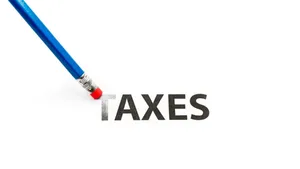When you start your investment journey, the first decision you make is not what to buy, but where to buy it.
Every dollar you earn is put into one of two major types of investment accounts. Understanding the difference between them is the single most important tax decision you will ever make as an investor.
The core question is simple: When will you pay the tax on your investment growth?
- Taxable Account (Standard Brokerage): You pay tax on your gains and income Every Year.
- Tax-Advantaged Account (Retirement Accounts): You get special tax breaks, usually by deferring the tax until Later (in retirement) or eliminating it Forever.
Knowing the tax rules for each account type is essential to maximizing your wealth, because saving on taxes is just as good as earning a return on your investment.
Taxable Accounts (The "Pay-As-You-Go" Account)
This is the account you open once you've contributed as much as you can to all your available retirement accounts. It’s also often called a Standard Brokerage Account.
What is it?
This is a regular account where you can buy and sell stocks, ETFs, mutual funds, and other assets. There are no limits on how much you can put in, and there are no rules about when you can take the money out.
The Tax Rule: Pay Every Year
The government treats your standard brokerage account like a checking account. If you make money, you owe tax on it that year.
You are taxed annually in three ways:
- Capital Gains: When you sell an investment for a profit (as we discussed in our Capital Gains guide).
- Dividends & Interest: When your investments pay you cash (dividends) or interest from bonds. This cash is taxed in the year you receive it.
- No Deduction: The money you put into this account is money you have already paid income tax on (i.e., you can't deduct your contribution).
The Simple Downside: This account creates tax drag. If your investment grows 10%, but you have to pay 15% in capital gains tax, you lose 1.5% of that growth to the IRS. This small annual leakage adds up to a huge difference over 30 years.
Tax-Deferred Accounts (The "Tax Break Now" Account)
This is the classic retirement vehicle. It's built to give you a big tax break today when your income (and therefore your tax bracket) is likely higher.
Key Examples:
- Traditional 401(k) (Through an employer)
- Traditional IRA (Individual Retirement Account)
The Tax Rule: Tax is Paid Later
This account is known as "tax-deferred" because it uses the "pay-later" model.
- The Benefit Now (The Deduction): The money you contribute is typically taken out of your paycheck before taxes are calculated. This means your taxable income for the year is lowered. For example, if you make $80,000 and contribute $5,000 to a Traditional 401(k), the IRS only sees your income as $75,000. You get a tax break today.
- The Growth: Your investments (stocks, ETFs, etc.) grow completely tax-free inside the account for decades. You don't pay any capital gains or dividend tax every year.
- The Catch (The Tax Event): The money is taxed when you withdraw it in retirement. Because you didn't pay tax on it when you put it in, the entire withdrawal—including all the profits—is taxed as regular income when you take it out (usually after age 59½).
The Simple Strategy: This is a great choice if you believe you will be in a lower tax bracket in retirement than you are right now (e.g., if you are a high earner today and expect to have less income later).
Tax-Exempt Accounts (The "Tax Break Later" Account)
This account is the opposite of tax-deferred. You pay the tax upfront, but the reward is tax-free growth forever. This is arguably the most powerful wealth-building vehicle available to young investors.
Key Examples:
- Roth 401(k) (Through an employer)
- Roth IRA (Individual Retirement Account)
- Health Savings Account (HSA) - The "triple tax-advantaged" account.
The Tax Rule: Tax is Paid Now
This account is known as "tax-exempt" because the growth itself is exempt from tax.
- The Deduction (The Penalty Now): The money you contribute is made with after-tax dollars. You do not get a tax deduction for your contribution this year.
- The Growth (The Reward Forever): This is the magic. All your investments grow tax-free inside the account. When you reach retirement, you can withdraw the entire amount—original contributions plus all the profits—completely tax-free. The government never touches it again.
The Simple Strategy: This is the best choice if you believe you will be in a higher tax bracket in retirement than you are right now (e.g., you are a low earner today, but you plan to save enough to be wealthy later). You pay a little tax today at a low rate to avoid a lot of tax later at a high rate.
Head-to-Head: The Summary
| Account Type | Standard Brokerage (Taxable) | Traditional IRA/401(k) (Deferred) | Roth IRA/401(k) (Exempt) |
| Tax on Contribution? | YES (No deduction) | NO (Contribution is deductible) | YES (No deduction) |
| Tax on Growth? | YES (Paid every year) | NO (Tax-free growth) | NO (Tax-free growth) |
| Tax on Withdrawal? | NO (Only on original cost) | YES (Taxed as income) | NO (Completely tax-free) |
| Goal: | Investing after maxing out retirement accounts. | Tax break now; lower tax bracket in retirement. | Tax-free money later; higher tax bracket in retirement. |
Where to Put Your Money
For a new investor, your goal should be to maximize your tax-advantaged accounts first, in this order:
- Your Employer 401(k) Match (Traditional or Roth): This is a 100% immediate return on your investment. Always max out your match first.
- Health Savings Account (HSA): If available, this is the "triple tax advantage" (tax-deductible contribution, tax-free growth, tax-free withdrawal for health expenses).
- Roth IRA: This is the next best spot for your money.
- Max Out 401(k): If you still have money to invest, max out the rest of your employer 401(k).
- Taxable Brokerage: Use this account only after every tax-advantaged avenue is exhausted.
By prioritizing your investments based on the tax structure, you ensure that you are not just getting a high return on your investment, but also keeping the largest possible share of that return away from the IRS.






